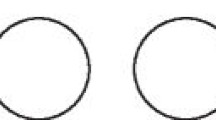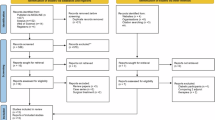Abstract
Data sources
Sources of studies were the Cochrane Oral Health Group List of Systematic Reviews in Dentistry, Database of Abstracts of Reviews of Effectiveness, Medline, Embase, and Scisearch. No date or language restriction was imposed. Reference lists of located reviews were checked for additional references.
Study selection
Twelve reviews addressing the question were included.
Data extraction and synthesis
A narrative appraisal of the reviews was conducted.
Results
A number of implications for clinical practice were identified. These are as follows:
Initial therapy:
-
In people who have periodontitis, mechanical nonsurgical pocket therapy reduces inflammation and pocket depth and increases clinical attachment level.
-
The magnitude of pocket depth reduction correlates with greater pocket depth before treatment.
-
Nonsurgical mechanical debridement may cause loss of attachment in shallow pockets (≤3 mm).
-
There is no evidence of any difference in efficacy between machine-driven (ultrasonic and sonic) and hand instruments in single-rooted teeth. Machine-driven instruments may be faster than hand instruments.
-
Adjunctive therapies have been developed and investigated but, to date, no therapy exists as a stand alone replacement for mechanical nonsurgical pocket therapy.
Maintenance therapy:
-
In periodontal maintenance patients, mechanical debridement reduces inflammation and disturbs the bacterial biofilm, which is thought critical to disease control including prevention of progression.
-
The effect of mechanical nonsurgical pocket therapy on pocket depth reduction and clinical attachment gain in maintenance patients is unclear; maintenance or stability of pocket probing depth and clinical attachment level, however, has been demonstrated and meets the goal of maintenance therapy.
-
There is not clear evidence to form recommendations over time taken, thoroughness and frequency of mechanical debridement for periodontal maintenance care.
Conclusions
Existing evidence in the form of systematic reviews — the highest level of evidence for evaluating a therapy — provides conclusive support for the beneficial effect and efficacy of mechanical nonsurgical pocket therapy in the treatment of periodontal diseases.
Similar content being viewed by others
Log in or create a free account to read this content
Gain free access to this article, as well as selected content from this journal and more on nature.com
or
References
Albucasis . La Chirurgie. Translated by L. LeClere. Paris: Bailliére, 1861.
Hirschfeld L, Wasserman B . A long-term survey of tooth loss in 600 treated periodontal patients. J Periodontol 1978; 49:225–237.
Author information
Authors and Affiliations
Additional information
Address for correspondence: J Suvan, Department of Periodontology, Eastman Dental Institute for Oral Health Care Sciences, University College London, Gray's Inn Road, London WC1X 8LD, UK.
Suvan JE. Effectiveness of mechanical nonsurgical pocket therapy. Periodontol 2000 2005; 37:48–71
Rights and permissions
About this article
Cite this article
Matthews, D. Conclusive support for mechanical nonsurgical pocket therapy in the treatment of periodontal disease. Evid Based Dent 6, 68–69 (2005). https://doi.org/10.1038/sj.ebd.6400338
Published:
Issue date:
DOI: https://doi.org/10.1038/sj.ebd.6400338



